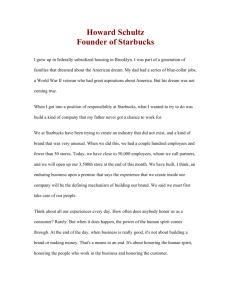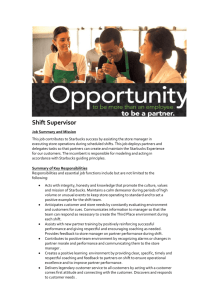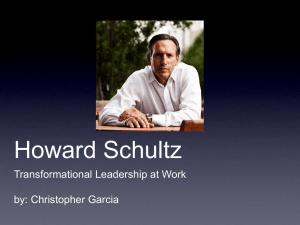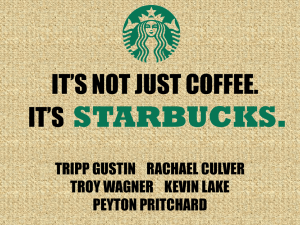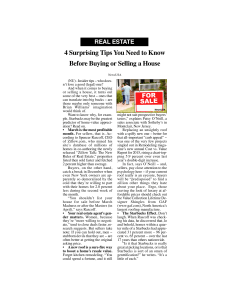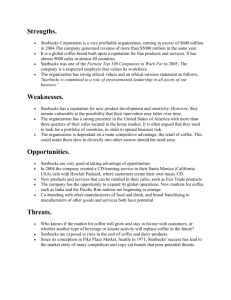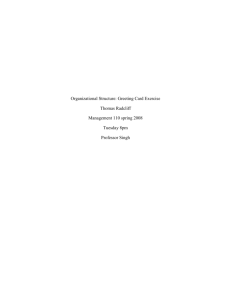Starbucks final - Learning With Larry
advertisement
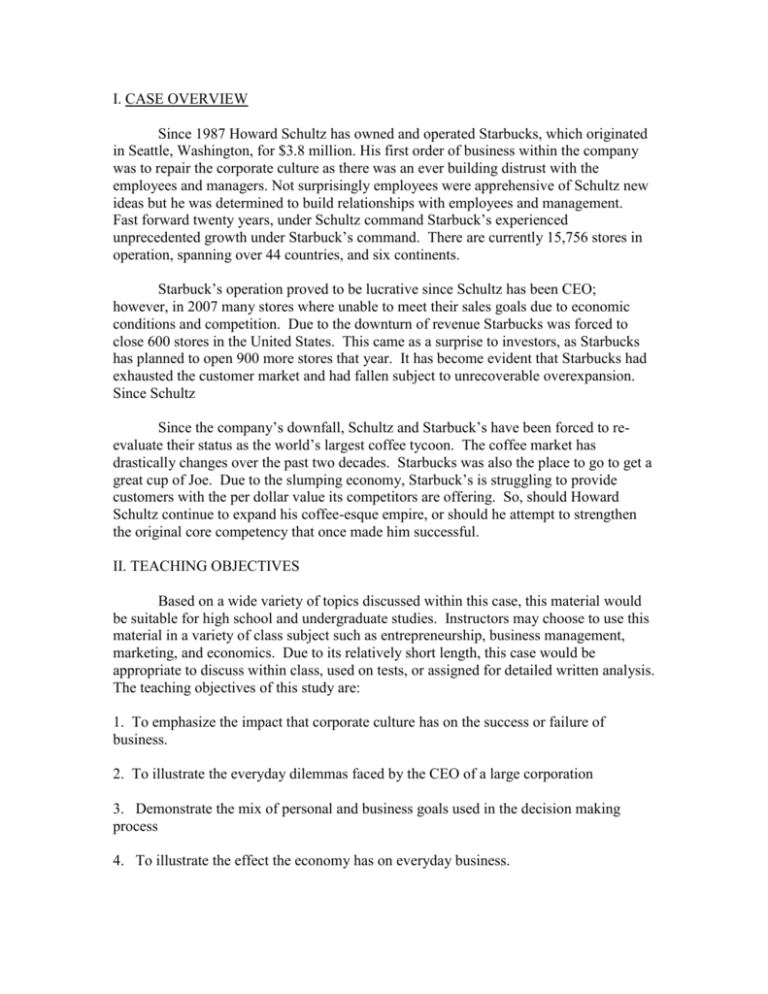
I. CASE OVERVIEW Since 1987 Howard Schultz has owned and operated Starbucks, which originated in Seattle, Washington, for $3.8 million. His first order of business within the company was to repair the corporate culture as there was an ever building distrust with the employees and managers. Not surprisingly employees were apprehensive of Schultz new ideas but he was determined to build relationships with employees and management. Fast forward twenty years, under Schultz command Starbuck’s experienced unprecedented growth under Starbuck’s command. There are currently 15,756 stores in operation, spanning over 44 countries, and six continents. Starbuck’s operation proved to be lucrative since Schultz has been CEO; however, in 2007 many stores where unable to meet their sales goals due to economic conditions and competition. Due to the downturn of revenue Starbucks was forced to close 600 stores in the United States. This came as a surprise to investors, as Starbucks has planned to open 900 more stores that year. It has become evident that Starbucks had exhausted the customer market and had fallen subject to unrecoverable overexpansion. Since Schultz Since the company’s downfall, Schultz and Starbuck’s have been forced to reevaluate their status as the world’s largest coffee tycoon. The coffee market has drastically changes over the past two decades. Starbucks was also the place to go to get a great cup of Joe. Due to the slumping economy, Starbuck’s is struggling to provide customers with the per dollar value its competitors are offering. So, should Howard Schultz continue to expand his coffee-esque empire, or should he attempt to strengthen the original core competency that once made him successful. II. TEACHING OBJECTIVES Based on a wide variety of topics discussed within this case, this material would be suitable for high school and undergraduate studies. Instructors may choose to use this material in a variety of class subject such as entrepreneurship, business management, marketing, and economics. Due to its relatively short length, this case would be appropriate to discuss within class, used on tests, or assigned for detailed written analysis. The teaching objectives of this study are: 1. To emphasize the impact that corporate culture has on the success or failure of business. 2. To illustrate the everyday dilemmas faced by the CEO of a large corporation 3. Demonstrate the mix of personal and business goals used in the decision making process 4. To illustrate the effect the economy has on everyday business. 5. To demonstrate the severity of the competitive market between large corporate entities. III. QUESTIONS 1. What decisions have Starbucks made in the past that are affecting them today? -Too many store openings -Lack of focus on core competency -Moved to quickly, allowed no time to test the waters 2. What ideas has and ethical beliefs had Schultz instilled into Starbucks, as it pertains to corporate culture? -Schults wanted Starbucks to be a place where workers and supervisors work with one another in a trusting environment. He also wanted employees to feel a sense of ownership within the company. He wanted employees to provide input and insight to what they were doing and how they thought things could be improved. 3. How has the recent downfall of the worldwide economy affected the way Starbucks is making management decisions? -Starbucks has completely reevaluated the needs of their company and have began to restructure the company slowly. Schultz wants to focus on the things that originally made Starbucks successful and wants to get rid of things that have clouded Starbucks image for the worse. 4. How has McDonald’s, Caribou, Dunkin Donuts, Panera Bread, and other competition made Starbucks reevaluate the customer market? -Intense competition has forces Starbucks to be innovative again. They are no longer the only coffe outlet with wi-fi. They have realized the company is no longer sitting at the top alone. There are other places to go and customers go where the best value is. 5. How has Starbuck’s recent struggle affected motivation within the company at both the executive and worker levels? -Executives at Starbucks are more motivated now than ever and they should be. Their company’s livelihood is at stake and they are hell-bent on keeping it alive and successful. Employee, on the other hand, may feel both positively and negatively about the matter. When the 600 stores closed, over 11,000 employees were out of jobs with nothing to show. They may feel Starbucks doesn’t care. However, some are enthusiastic and are buying into Schultz’ emphasis on corporate culture.
